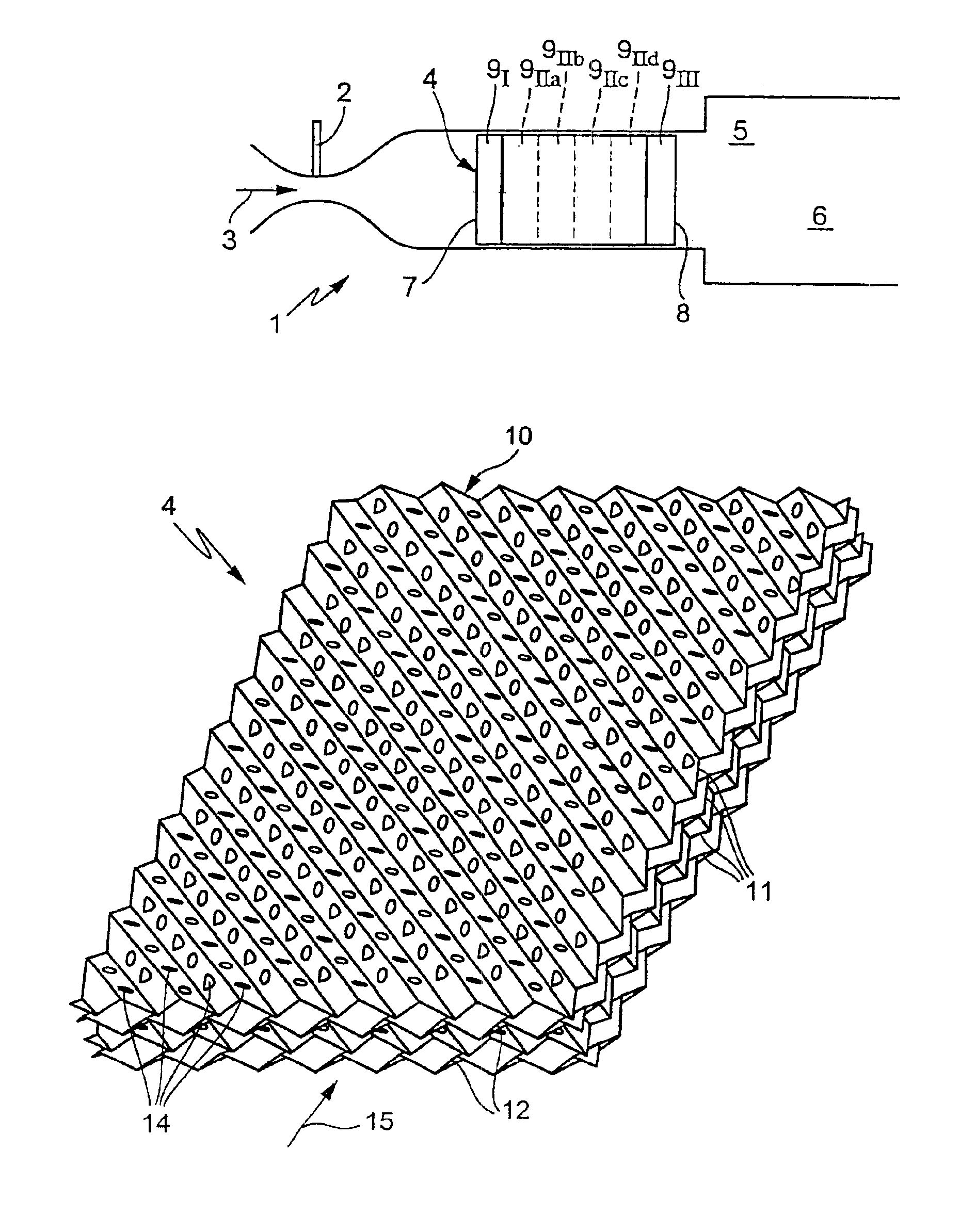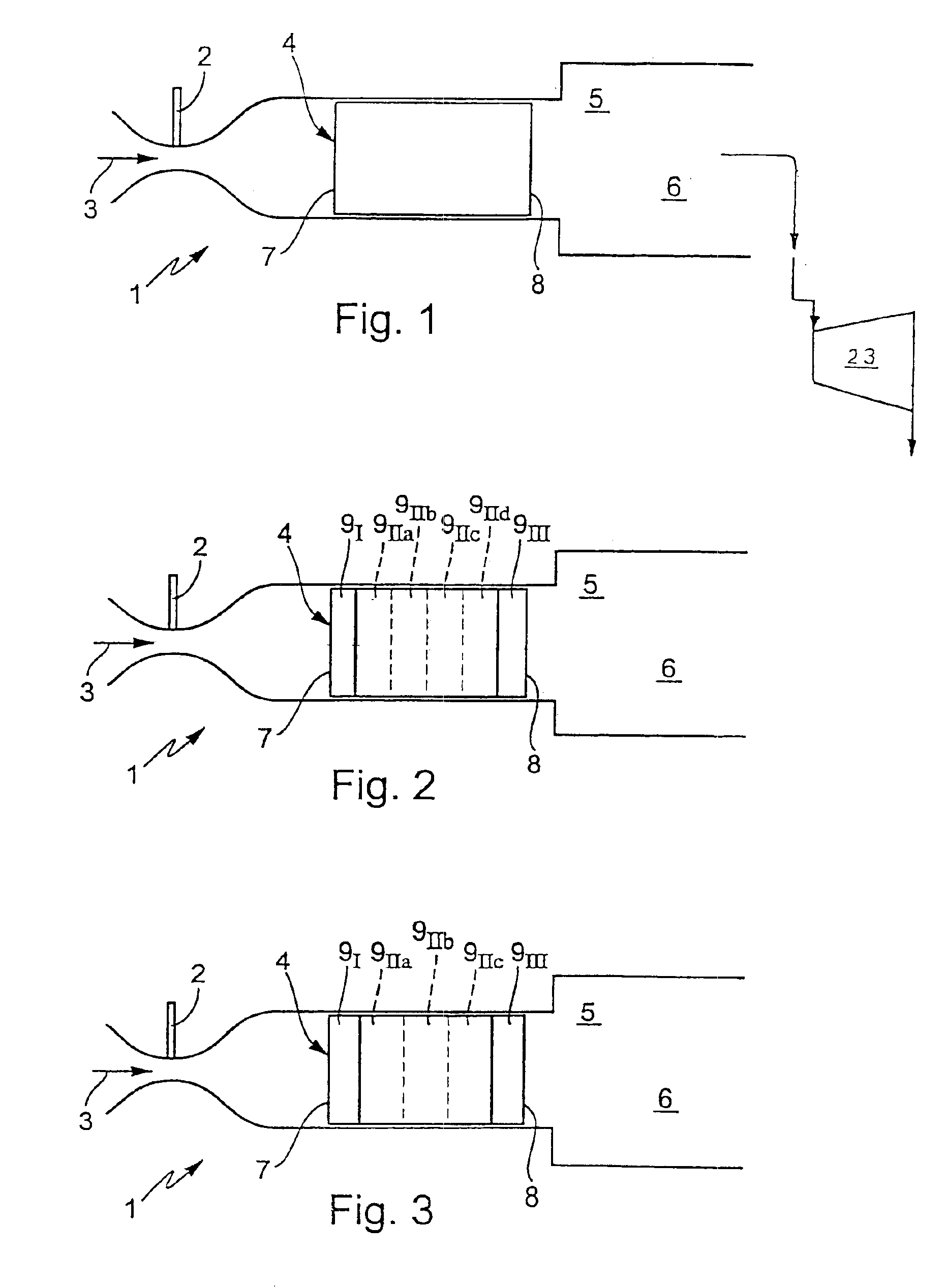Catalytically operating burner
a burner and catalytic technology, applied in the direction of catalytic material combustion, furnaces, combustion types, etc., can solve the problems of relative high ignition temperature of the gaseous reaction mixture, risk of overheating of the catalytic converter structure, etc., to improve the homogenous gas phase reaction, reduce the design length, and reduce the effect of ignition temperatur
- Summary
- Abstract
- Description
- Claims
- Application Information
AI Technical Summary
Benefits of technology
Problems solved by technology
Method used
Image
Examples
second embodiment
[0056]In a second embodiment according to FIG. 2, the inlet zone 9I is constructed catalytically inactive or inert and is equipped with turbulators (not shown here). Because of this measure, the inlet zone 9I acts as a static mixer that ensures homogeneous mixing of the gas stream 3 with the injected fuel. In the intermediate zone 9II, the carrier material is coated with a catalyst. The individual partial zones 9IIa to 9IId hereby may differ from each other with respect to catalytic activity and / or flow characteristics (e.g., turbulator density). In this intermediate zone 9II, the catalyst initiates the combustion reaction of the reaction mixture. By construction of the individual partial zones 9IIa to 9IId, this catalytically active part of the catalyzer structure 4 is specifically constructed so that a lower ignition temperature is achieved, whereby, the development of a homogeneous gas phase reaction within the catalyzer structure 4 is still avoided. In particular, one or the oth...
third embodiment
[0057] according to FIG. 3, the inlet zone 9I is designed so that between the adjoining channels a relatively intensive mixing that brings about a correspondingly intensive temperature compensation occurs. This can be realized in particular by means of correspondingly arranged turbulators. The inlet zone 9I is furthermore designed catalytically highly active so that the inlet zone 9I functions as an ignition zone. These characteristics of the inlet zone 9I can be realized in a particularly simple manner by using a woven metallic fiber material coated with the highly active catalyst as a carrier material. The intermediate zone 9II is also coated with a catalyst, whereby the intermediate zone 9II is designed with respect to a minimal pressure decrease, so that the risk that a homogeneous gas phase reaction is ignited within the catalyzer structure 4 is reduced. The intermediate zone 9II, for example, can be divided into several partial zones 9IIa to 9IIc that differ from each other wi...
PUM
| Property | Measurement | Unit |
|---|---|---|
| angle | aaaaa | aaaaa |
| catalytic activities | aaaaa | aaaaa |
| area | aaaaa | aaaaa |
Abstract
Description
Claims
Application Information
 Login to View More
Login to View More - R&D
- Intellectual Property
- Life Sciences
- Materials
- Tech Scout
- Unparalleled Data Quality
- Higher Quality Content
- 60% Fewer Hallucinations
Browse by: Latest US Patents, China's latest patents, Technical Efficacy Thesaurus, Application Domain, Technology Topic, Popular Technical Reports.
© 2025 PatSnap. All rights reserved.Legal|Privacy policy|Modern Slavery Act Transparency Statement|Sitemap|About US| Contact US: help@patsnap.com



